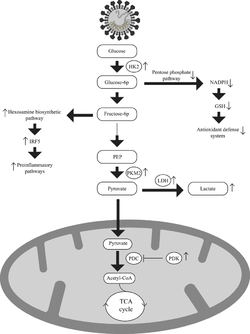I never really understood why anyone was surprised by that. I thought being overweight had a proportional effect on your immune system, like the fatter you are the worse the burden on your immune system sort of deal. I mean, ditto for everything else in the body too I guess now that I think about it.
@SCSI @borsabil @Lichen Bark @RiverFalcon
In the case of COVID-19, obesity, diabetes, and hypertension actually do a number of things.
- Obesity likely increases ACE2 expression as a reactive adaptation, since ACE2 acts to lower blood pressure by converting Ang II into Ang 1-7. ACE2 is an enzyme that converts a vasoconstrictor hormone into a vasodilator, thereby reducing blood pressure. Greater ACE2 expression gives the virus more sites on the surfaces of vascular endothelial cells to bind to.
- It enhances baseline inflammation, complement system activation, histamine reactions, etc.
- It is a sign of Vitamin D depletion, which means that cells lack the factors necessary to remove excess calcium. This leads to leads to chronic oxidative stress that depletes stores of antioxidant enzyme substrates like glutathione, shifting the redox equilibrium of the body.
- It causes endothelial dysfunction and loss of nitric oxide bioavailability. Nitric oxide is actually antiviral against SARS-CoV-2 because it inhibits the chemical processing of the Spike protein that must take place before fusion.
All of these things actually make the virus replicate faster and cause more damage, simply due to NO depletion and accelerated oxidative stress. This particular cluster of features (obesity, diabetes, hypertension, old age, and/or African-American race) all point to the same thing; endothelial dysfunction/metabolic syndrome is the culprit. It's what makes COVID-19 substantially worse.
The exact portrait of the most vulnerable person to COVID-19 is a 60-plus-year-old, fat, gouty black guy with diabetes and atherosclerosis.
SARS-CoV-2 may actually directly manipulate glucose metabolism, like so:

As the antioxidant substrates drop off, oxidative stress increases. Oxidative stress destroys NO by reaction with superoxide to make peroxynitrite. The loss of NO bioavailability leads to much faster viral replication and runaway oxidative stress damage, ultimately ending in hydroxyl radical formation, ferroptosis, and parthanatos of the cells.
Multi-system involvement and rapid clinical deterioration are hallmarks of coronavirus disease 2019 (COVID-19) related mortality. The unique clinical phenomena in severe COVID-19 can be perplexing, and they include disproportionately severe hypoxemia ...

www.ncbi.nlm.nih.gov
Humanity is battling a respiratory pandemic pneumonia named COVID-19 which has resulted in millions of hospitalizations and deaths. COVID-19 exacerbations occur in waves that continually challenge healthcare systems globally. Therefore, there is an urgent ...

www.ncbi.nlm.nih.gov
Severe acute respiratory syndrome coronavirus 2 (SARS-CoV-2) is involved in a global outbreak affecting millions of people who manifest a variety of symptoms. Coronavirus disease 2019 (COVID-19) caused by SARS-CoV-2 is increasingly associated with cardiovascular ...

www.ncbi.nlm.nih.gov
It's the theory that most closely fits observations.
Proning and venting someone does not fix this, because it is fundamentally a blood vessel chemistry issue. Yes, patients need oxygen to make ATP, but if you pump craploads of O2 into their lungs, you're going to get more damaging radicals from hypoxanthine and succinate breakdown (a.k.a. ischemia-reperfusion injury, or, in this case, VILI), which will, in turn, lead to steroid insensitivity as those radicals start inhibiting glucocorticoid receptors.
The oxidative stress here is extremely aggressive, beyond what people typically think of as "oxidative stress". It's more like a caustic chemical burn. If you vent without enhancing endogenous antioxidant activity, the lungs will turn to mush and will be full of lipid hydroperoxides and dead, bleached cells.
Ventilators and dexamethasone on their own
are not enough. These patients need allopurinol to block xanthine oxidase, NADPH oxidase blockers to reduce superoxide production, calcium channel blockers to reduce intracellular Ca2+ pathway activity and the massive stress from that, iron chelation to remove a source of Fenton reagents, and Nrf2 activators and powerful antioxidants to soak up any radicals that are there.







